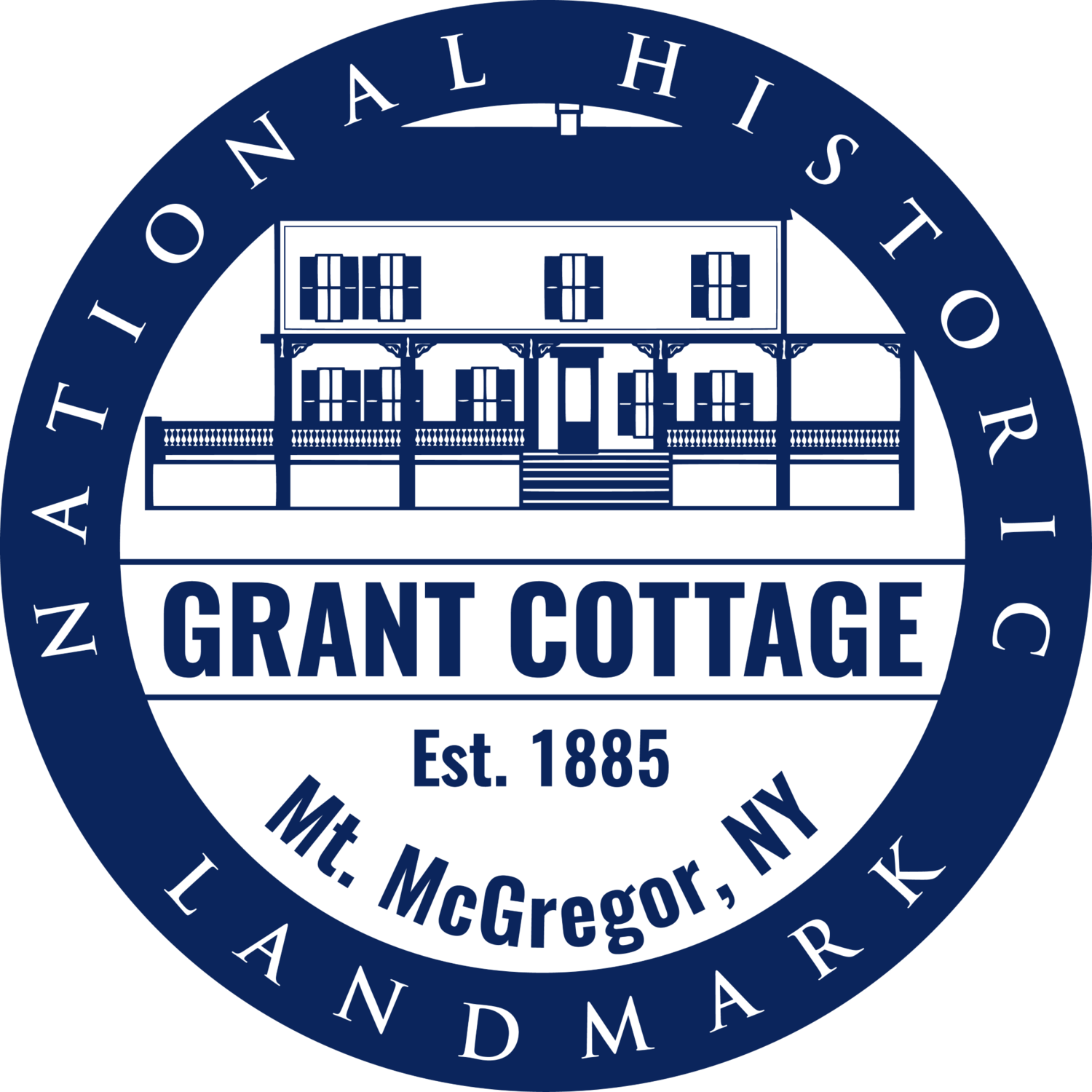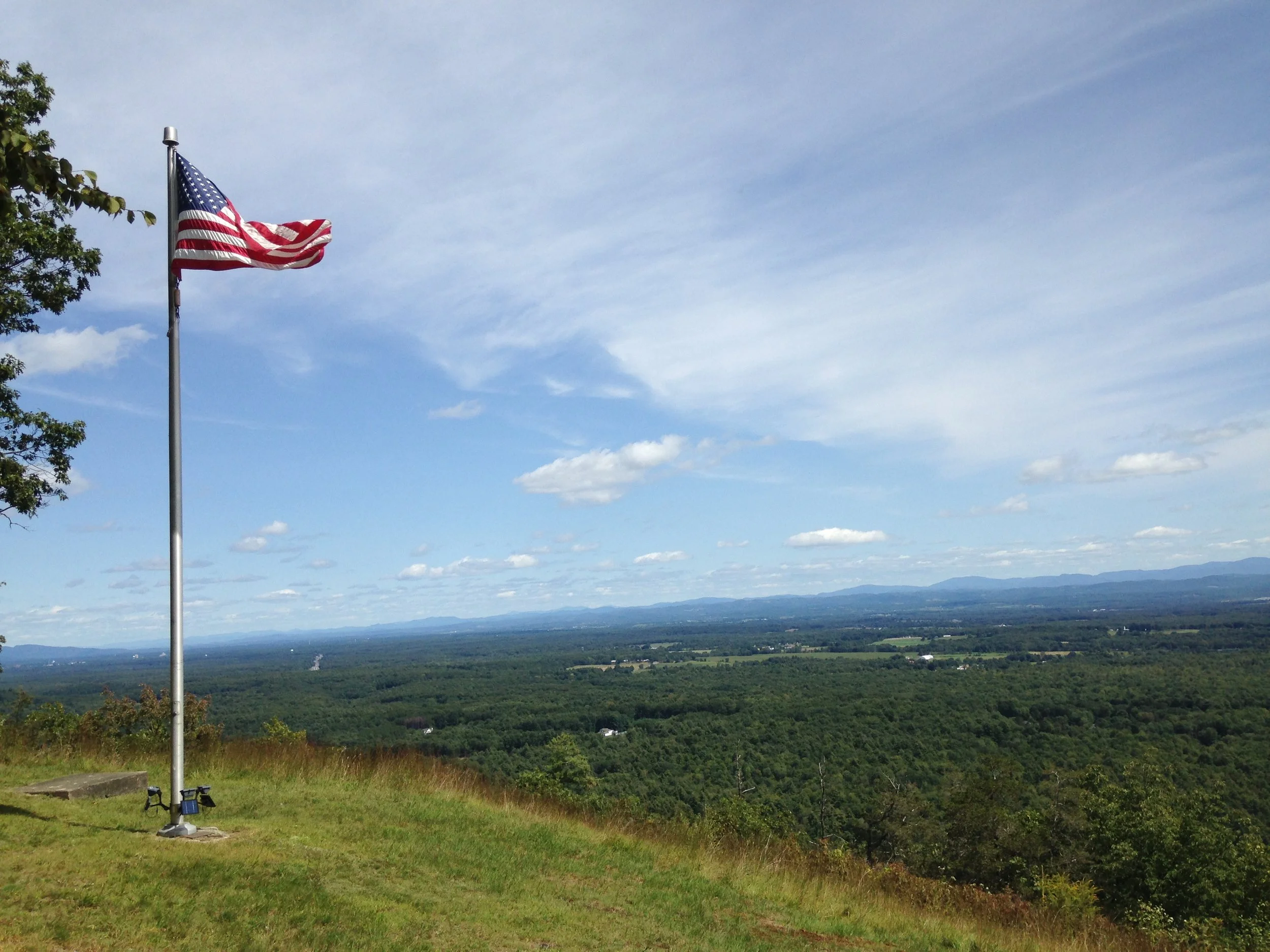By Ben Kemp Grant Cottage Operations Manager
The American flag, a powerful symbol of unity of purpose, dedication to duty, bravery, sacrifice, and perseverance. The flag stands for a country that has endured much to remain united and strong, but also for those who have sacrificed to make that nation’s survival possible; the veterans.
Perhaps the most well-known veteran of the Mexican-American and American Civil Wars, Ulysses Grant, arrived at Drexel Cottage on Mt. McGregor, NY in the spring of 1885. Grant was struggling against cancer to finish his memoirs, volumes he had dedicated to the “American Soldier and Sailor.” It would be shortly after completing this two-volume work about his experiences in war that this veteran would be placed in his casket which was draped with the symbol of the nation he fought to preserve.
It would be fellow veterans that would stand guard on Mt. McGregor and veterans who carried his casket to the funeral train. Veterans would also turn out in the hundreds of thousands to remember their former commander in memorial exercises throughout the country in the summer of 1885.
In the following decades, countless veterans made the pilgrimage to Grant Cottage to honor the memory of their former commander. Doubtless, a number of these veterans would have been recipients of the nation’s highest military award of merit; the Congressional Medal of Honor (MOH).
As early as 1890, flags were provided to Grant Cottage by veterans organizations and their auxiliaries as they gathered atop Mt. McGregor to commemorate their comrade and the many other veterans who gave service to their nation. The Grand Army of the Republic (G.A.R.), the largest and most well-known organizations for Civil War veterans had contributed to the preservation of the cottage and installed a Civil War veteran, Oliver Clarke, as its first caretaker in 1889.
The Medal of Honor itself was established during the American Civil War to recognize soldiers who “distinguish themselves by their gallantry in action and other soldier-like qualities…” Without clear criteria for what constituted an act of gallantry worthy of the medal, many were given out for preserving the American flag in battle. The flag was not simply a symbol but a military instrument used to rally troops to a location and imbue the soldiers with a strong sense of honor and inspiration at the most trying moments.
Grand Army of the Republic veterans march with the colors on Mt. McGregor in 1915.
On May 1st, 1927, hundreds of individuals attended a ceremony on Mt. McGregor to dedicate a new 60ft high flagpole at the Eastern Overlook. After a ceremony at the flag-draped stone monument in front of Grant Cottage (installed by veterans in 1916), they proceeded to the Eastern Overlook. The ceremony included drums played with drumsticks used in U.S. Grant’s funeral 42 years before. After remarks by surviving Civil War veterans, The Star-Spangled Banner was played as an enormous 20ft x 10ft flag was unfurled. The Sons of Union Veterans of the Civil War (SUVCW) and its auxiliaries tasked themselves with supplying new stars and stripes to the mountain on General Grant’s birthday (April 27th) each year thereafter.
Grant Cottage caretaker Suye raises the flag at the Eastern Overlook.
During the Civil War and since over 3500 service members have received the Medal of Honor, over 1500 of them during the 1861-1865 conflict. In the spring of 1998, there was a gathering of the Congressional Medal of Honor Society (established in 1958) in nearby Saratoga Springs, NY. Seventy-eight Medal of Honor veterans, nearly half of all surviving recipients at the time, were in attendance. The Eastern Overlook flagpole, on which Grant Cottage caretaker Suye Narita Gambino had raised the flag faithfully for 50 years had been removed due to deterioration in 1977. On June 5, 1998 a new flagpole was dedicated on the Eastern Overlook. Medal of Honor recipient Captain James M. Burt was a special guest and speaker. Burt, one of 472 individuals awarded the MOH in connection to World War II, had displayed great bravery and perseverance in the Battle of Aachen, Germany in October 1944. The flagpole at the overlook has a plaque honoring Medal of Honor recipients, and though smaller than its predecessor its flag can still be seen clearly from the valley below.
Captain Burt receives the Medal of Honor from Pres. Truman in 1945.
The flags at the Eastern Overlook and in front of Grant Cottage are constant reminders to all those who visit the Historic Site that many have sacrificed to create and maintain the nation we have today. It is perfectly fitting that Grant Cottage continues to be a place to honor and remember veterans. The flag will continue to wave on the overlook above the valley where our nation was forged by the brave heroes of the Revolution and provide reflection of those who continue to defend our freedoms to this day. May we look to the flag and remember the words of one General who had a great heart for the veterans who had served under him:
“Let their heroism and sacrifices be ever green and in our memory. Let not the results of their sacrifices be destroyed. The Union and the free institutions for which they fell, should be held more dear for their sacrifices.” -US Grant
In honor of Captain James Burt (1917-2006)
and all other veterans who have faithfully served the United States.
















